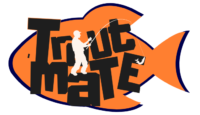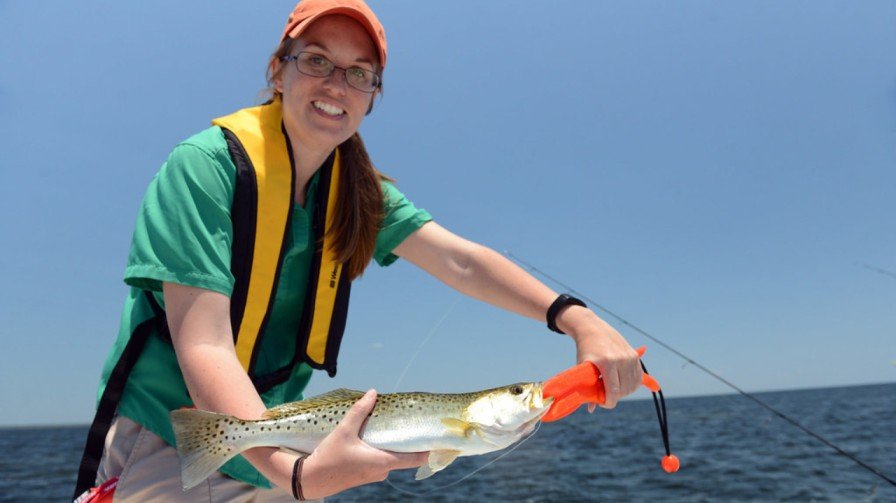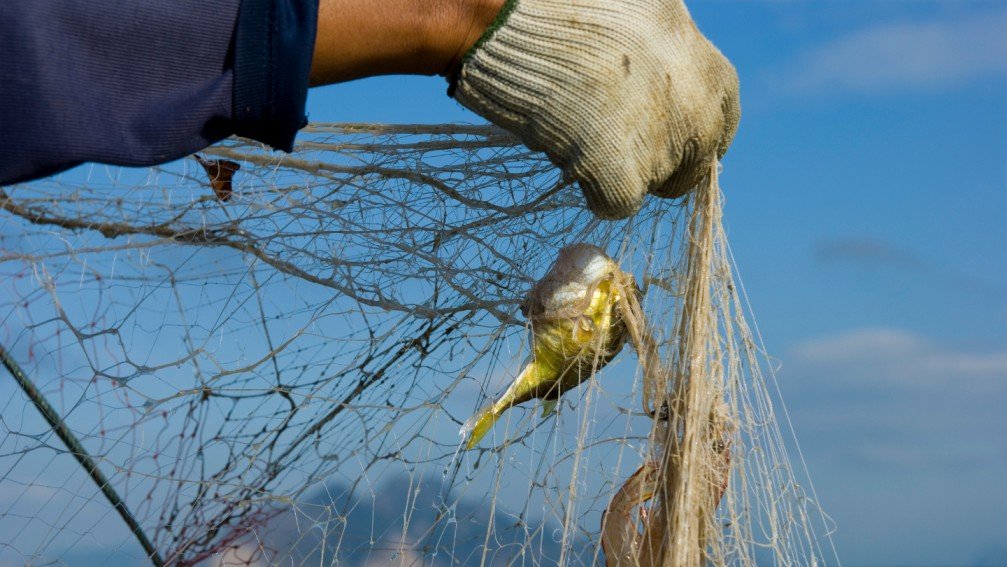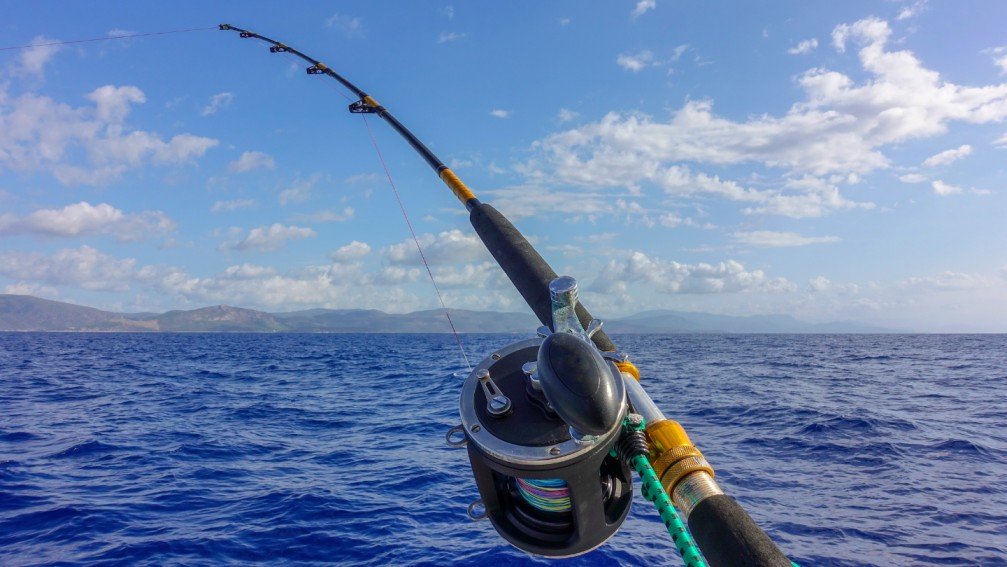To catch sea trout, use light tackle and natural bait in estuaries and coastal areas during early morning or late evening. Cast near structures like rocks or piers where sea trout often hide.
Sea trout fishing is an exciting activity for both novice and experienced anglers. These fish are known for their elusive nature and strong fight, making them a prized catch. The best times to fish for sea trout are dawn and dusk, when they are most active.
Estuaries, coastal areas, and tidal rivers are prime locations. Use light tackle and natural bait like shrimp or small fish for the best results. Patience and skill are essential, as sea trout can be wary and challenging to catch. Happy fishing!
Credit: m.youtube.com
Introduction To Sea Trout Fishing
Sea trout fishing is an exciting and rewarding activity. These fish are known for their strength and agility. They provide a challenging yet enjoyable experience for anglers.
Why Sea Trout?
Sea trout are popular among anglers for various reasons:
- Fighting Spirit: Sea trout put up a great fight.
- Delicious Taste: They are known for their tasty meat.
- Beautiful Appearance: Their silver scales are stunning.
Best Locations
Finding the right location is key to successful sea trout fishing. Here are some top spots:
| Location | Why It’s Great |
| Norwegian Fjords | Abundant sea trout and scenic views. |
| Irish Coasts | Rich waters and great fishing spots. |
| Scottish Rivers | Perfect for both beginners and experts. |
Choose a spot that matches your skill level and preferences. Research local regulations before heading out.
Essential Gear
To catch sea trout successfully, having the right gear is crucial. The essential gear includes the correct rod and reel, bait, and lures. These tools will help you land more sea trout.
Rod And Reel Selection
Choosing the right rod and reel is important for sea trout fishing. A medium-action rod of 7-8 feet works best. This length helps with casting distance and control.
For the reel, use a spinning reel with a smooth drag system. A reel rated for a 10-20 lb line is ideal. This will help you handle the strong fight of sea trout.
Here is a quick guide:
| Rod Length | Action | Reel Type | Line Rating |
| 7-8 feet | Medium | Spinning | 10-20 lb |
Bait And Lures
Using the right bait and lures attracts more sea trout. Live bait such as shrimp and mullet works well. You can also use artificial lures like soft plastics and spoons.
- Live Bait: Shrimp, Mullet
- Soft Plastics: Swimbaits, Jerkbaits
- Spoons: Silver and Gold Colors
Soft plastics mimic the movement of small fish. Spoons flash in the water, catching the trout’s attention. Always keep a variety of baits and lures in your tackle box.
Seasonal Considerations
Understanding seasonal considerations is crucial for catching sea trout. Different seasons require different strategies and techniques. This guide will help you adapt your approach throughout the year.
Spring And Summer Tips
During spring, sea trout become more active as the water warms. Focus on shallow waters near the shore. Use bright lures to attract their attention.
- Best Time: Early morning or late afternoon
- Preferred Baits: Worms, shrimp, and small fish
- Ideal Locations: Coastal estuaries, river mouths, and shallow bays
In summer, sea trout move to deeper waters to stay cool. Target them during the cooler parts of the day. Use topwater lures at dawn and dusk.
- Best Time: Dawn and dusk
- Preferred Baits: Minnows and squid
- Ideal Locations: Deeper channels and cooler inshore waters
Fall And Winter Strategies
In fall, sea trout prepare for winter by feeding aggressively. This is a great time for anglers. Focus on areas with plenty of baitfish.
- Best Time: Late afternoon
- Preferred Baits: Mullet and sardines
- Ideal Locations: Grass flats and drop-offs
Winter fishing for sea trout can be challenging. They move to the warmest available waters. Look for them in deeper holes and channels.
- Best Time: Midday
- Preferred Baits: Live shrimp and soft plastics
- Ideal Locations: Deep channels and warm-water outflows
Using these seasonal strategies will increase your chances of catching sea trout. Adapt your techniques to the time of year and enjoy successful fishing trips.
Credit: ioutdoor.com
Reading The Water
To catch sea trout, understanding how to read the water is crucial. Reading the water means observing and interpreting water conditions and features. These insights help you find the best fishing spots and improve your success rate.
Identifying Hot Spots
Hot spots are areas where sea trout are likely to gather. Look for structures like rocks, reefs, and sandbars. These features create currents and provide food sources. Sea trout often swim near these structures, seeking food and shelter.
- Rocks and Reefs: These areas break up water flow and attract prey.
- Sandbars: Fish gather here to feed on smaller fish and crustaceans.
- Estuaries: Freshwater mixes with saltwater, attracting sea trout.
Understanding Water Conditions
Water conditions play a significant role in sea trout behavior. Knowing the tide, water temperature, and clarity can help you predict their movements.
| Condition | Impact on Sea Trout |
| Tide: | High tide often brings sea trout closer to shore. |
| Water Temperature: | Sea trout prefer water between 55-65°F. |
| Water Clarity: | Clear water makes it easier for sea trout to spot prey. |
By understanding these water conditions, you can increase your chances of catching sea trout. Observing and adapting to these factors is key to successful fishing.
Casting Techniques
Mastering casting techniques is key to catching sea trout. Effective casting improves your chances of landing a catch. Here, we focus on two main aspects of casting: Improving Accuracy and Maximizing Distance.
Improving Accuracy
Accurate casting ensures your lure lands where sea trout swim. Follow these tips for better accuracy:
- Use a shorter rod: Shorter rods give you better control.
- Practice sidearm casts: Sidearm casts reduce wind resistance.
- Watch your target: Keep your eyes on the target area.
To further improve, always practice in similar conditions. Make sure to adjust your technique based on wind and water flow. This will help you adapt quickly in different environments.
Maximizing Distance
Long-distance casts help you reach deeper waters where sea trout hide. Consider these techniques for maximizing distance:
- Use a longer rod: Longer rods increase casting distance.
- Choose the right line: Thinner lines reduce drag.
- Perfect your timing: Timing is crucial for power.
For extra distance, use a two-handed casting technique. This method provides more power and reach. Always ensure your reel is in good condition for smooth casts.
Here is a quick comparison of rod lengths and their benefits:
| Rod Length | Benefits |
| 6-7 feet | Better accuracy, more control |
| 8-9 feet | Balanced accuracy and distance |
| 10+ feet | Maximized distance, less control |
Remember, practice is essential. Spend time refining your technique to become a better caster.
Retrieval Methods
Catching sea trout requires skill and technique, especially in the retrieval methods. The way you retrieve your lure can significantly impact your success. Here, we’ll discuss two effective retrieval methods: Slow and Steady and Fast and Erratic.
Slow And Steady
The Slow and Steady method is perfect for enticing sea trout. This approach mimics the natural movement of baitfish. It’s best used in calm waters or when fish are less active.
- Cast your line and let the lure sink.
- Retrieve the lure at a slow, constant pace.
- Pause occasionally to mimic a struggling fish.
- Watch for any subtle bites or movements.
This method is ideal during colder months or early mornings. Sea trout are less likely to chase fast-moving targets during these times.
Fast And Erratic
The Fast and Erratic retrieval method is designed to trigger the predatory instincts of sea trout. This technique is particularly effective in warmer water conditions.
- Cast your line and start a rapid retrieve.
- Incorporate quick jerks and pauses.
- Vary the speed to create an unpredictable motion.
- Be ready for aggressive strikes.
This method works well in shallow waters and near structures. Sea trout often hunt in these areas and respond to sudden movements.
| Retrieval Method | Ideal Conditions | Key Actions |
| Slow and Steady | Calm waters, cold months | Slow pace, occasional pauses |
| Fast and Erratic | Warm waters, shallow areas | Rapid retrieve, quick jerks |
Understanding these retrieval methods can make a big difference. Try both techniques and see which one works best for you.
Handling And Releasing
Handling and releasing sea trout properly ensures their survival and health. These practices help maintain fish populations and ecosystems. Below, we discuss essential tips and best practices.
Proper Fish Handling
Handle sea trout with wet hands to protect their slime coating. This coating protects them from disease and injury.
- Use a landing net with rubber mesh.
- Avoid squeezing the fish tightly.
- Support the fish’s belly when lifting.
- Keep the fish in the water as much as possible.
Minimize the time the fish spends out of water. The longer a fish is out, the higher the stress.
Catch And Release Best Practices
Follow these steps to release sea trout safely:
- Remove the hook gently using pliers or a hook remover.
- If the hook is deep, cut the line and leave the hook.
- Revive the fish by holding it in the water, facing the current.
- Allow the fish to swim away on its own.
Use barbless hooks to make release easier and less stressful. Avoid fishing in extremely hot or cold conditions to reduce fish stress.
By following these tips, you help preserve sea trout populations for future anglers.
Advanced Tips
To catch sea trout, you need more than basic skills. Advanced tips can make a big difference. These tips focus on using technology and night fishing. Both can greatly improve your success rate.
Using Technology
Modern technology can be a game-changer in fishing. Using a fish finder can help you locate sea trout quickly. These devices show fish locations on a screen. You can also use GPS to mark your favorite fishing spots. This way, you can easily return to them later.
Another useful tool is a water temperature gauge. Sea trout prefer certain temperatures. Knowing the water temperature can help you find the best spots. Use mobile apps to get real-time data on weather and tides. This information can help you plan your fishing trips better.
| Technology | Benefit |
| Fish Finder | Locates fish quickly |
| GPS | Marks favorite spots |
| Water Temperature Gauge | Finds optimal fishing spots |
| Mobile Apps | Provides real-time data |
Night Fishing
Night fishing can be very effective for catching sea trout. These fish are more active at night. They come closer to shore to feed. Use glow-in-the-dark lures to attract them. These lures are easy for fish to see in the dark.
Bring a good headlamp with you. It keeps your hands free and helps you see what you are doing. Also, be quiet. Noise can scare the fish away. Use a light tackle setup. This makes it easier to feel the fish bite.
Here are some tips for night fishing:
- Use glow-in-the-dark lures.
- Bring a headlamp.
- Stay quiet.
- Use light tackle.
By following these advanced tips, you can catch more sea trout. Use technology and night fishing to your advantage. Happy fishing!
Safety And Regulations
Fishing for sea trout can be a thrilling experience. But, it’s crucial to focus on safety and regulations to ensure a successful and responsible fishing trip. Ignoring these can lead to accidents or legal trouble. Let’s dive into the key aspects of safety and regulations.
Local Fishing Laws
Each region has its own set of local fishing laws. These laws dictate the fishing season, size limits, and the number of fish you can catch. Check the regulations before heading out. You can find this information on local government websites or fishing guides.
Here’s a quick guide to understanding local fishing laws:
- Fishing Seasons: Some areas have specific seasons for sea trout fishing. Respect these to avoid legal issues.
- Size Limits: There are minimum and maximum size limits for sea trout. This helps in conserving the fish population.
- Catch Limits: Know the maximum number of sea trout you can catch in a day. This prevents overfishing.
Personal Safety
Your personal safety should always be a priority. Being prepared can prevent accidents and ensure a safe fishing trip. Here are some essential safety tips:
- Wear a Life Jacket: Always wear a life jacket when fishing on a boat.
- Check Weather Conditions: Avoid fishing during bad weather. Check the forecast before you go.
- Bring a First Aid Kit: A first aid kit can be a lifesaver in case of minor injuries.
- Stay Hydrated: Bring enough water to stay hydrated throughout the day.
- Use Sunscreen: Protect your skin from harmful UV rays with sunscreen.
By following these guidelines, you can enjoy a safe and legal sea trout fishing experience. Stay informed and prepared to make the most of your fishing adventure.
Mastering the art of catching sea trout requires patience, the right gear, and knowledge of their habits. By following these tips, you can enhance your fishing experience and increase your chances of success. Remember, practice makes perfect, so get out there and enjoy the thrill of sea trout fishing!



